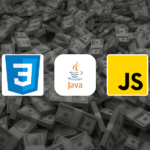Rust is a popular and powerful programming language that offers many benefits
such as speed, safety, and concurrency. Rust can also be used to create
graphical user interfaces (GUIs) for desktop applications, embedded devices,
and web browsers. However, building GUIs in Rust can be challenging due to the
lack of a standard UI library and the complexity of managing data across
components. Fortunately, there are several UI frameworks in Rust that aim to
simplify the development of GUI applications and provide a rich set of
features and functionalities. In this blog post, we will explore some of these
UI frameworks and compare their advantages and disadvantages. We will also
mention the supported platforms for each framework and provide some code
examples to demonstrate how to use them.
Tauri
Tauri is an open-source package that enables developers to create
lightweight, web-based desktop applications using Rust. Tauri leverages
JavaScript, WebAssembly, and other web technologies to create a seamless
development experience. Tauri provides a simple API for creating and
customizing desktop applications, making it easy for developers to build
cross-platform applications that run on Windows, Mac, and Linux.
Advantages
- Performance and efficiency due to web technology stack.
- Security features such as sandboxing, encryption, and code signing.
- Supports native APIs and JavaScript interoperability.
- Cross-platform support.
- Active development.
Disadvantages
- Requires some knowledge of web development.
- Still in the beta stage.
- Might lack some advanced GUI features.
To use Tauri, you need to add it as a dependency in your
Cargo.toml file:
[dependencies]
tauri = "0.9.0"Then, you can import it in your Rust file and use the Builder struct to create your application:
use tauri::{Builder, Tauri};
fn main() {
Builder::default()
.setup(|app| {
// initialize your app
})
.run(Tauri::generate_context!())
.expect("error while running tauri application");
}You can find more information and examples on the
official website.
Druid
Druid is another open-source UI framework for Rust that aims to provide a
declarative and reactive way of building GUI applications. Druid uses a
data-driven approach to manage the state of the UI and update it
automatically when the data changes. Druid also offers a widget system that
allows developers to create reusable components with custom behaviors and
styles.
Advantages
- Declarative and reactive UI development.
- Hot reloading for faster development iterations.
- Native look and feel on each platform.
- Comprehensive documentation and a friendly community.
Disadvantages
- Limited to desktop platforms.
- Still under active development.
- Might have some performance issues or bugs.
To use Druid, you need to add it as a dependency in your
Cargo.toml file:
[dependencies]
druid = "0.7"Then, you can import it in your Rust file and use the AppLauncher struct to
launch your application:
use druid::{AppLauncher, WidgetExt};
fn main() {
let window = druid::WindowDesc::new(build_ui);
AppLauncher::with_window(window)
.launch("Hello World".to_string())
.expect("launch failed");
}
fn build_ui() -> impl druid::Widget {
// create your UI here
}You can find more information and examples on the
official website.
Slint
Slint is an open-source UI framework for Rust that focuses on building
native user interfaces for embedded devices, microcontrollers, and desktop
platforms. Slint provides a comprehensive yet simple solution for building
applications with low memory and CPU usage. Slint also supports multiple
programming languages, such as C, C++, Python, and JavaScript, in addition
to Rust.
Advantages
- Supports hardware acceleration for improved graphics performance.
- Scripting support for dynamic UI logic.
- Modular architecture for customization.
- Supports multiple programming languages.
- Suitable for embedded devices and desktop platforms.
Disadvantages
- Requires knowledge of low-level programming.
- Still in alpha stage.
- Might lack a large and active community.
To use Slint, you need to add it as a dependency in your
Cargo.toml file:
[dependencies]
slint = "0.1"Then, you can import it in your Rust file and use the Application struct to
create your application:
use slint::{Application, Window};
fn main() {
let mut app = Application::new();
let window = Window::new("Hello World");
app.add_window(window);
app.run();
}You can find more information and examples on the
official website.
Dioxus
Dioxus is a Rust UI framework that takes a unique approach by focusing on
immediate mode GUI (IMGUI) programming. IMGUI allows you to create and
manipulate UI elements directly within your rendering loop, providing a
flexible and dynamic way to build user interfaces.
Advantages
- Immediate mode GUI approach for flexible and dynamic UI creation.
- Suitable for rapid prototyping and user interfaces that change frequently.
- No need to manage complex state and event handling.
- Integrates well with rendering engines.
Disadvantages
- Can lead to code duplication if not organized properly.
- May not be as suitable for complex or structured UIs.
- Framework might be less mature compared to others.
To use Dioxus, you need to add it as a dependency in your
Cargo.toml file:
[dependencies]
dioxus = "0.1"Then, you can import it in your Rust file and use the Dioxus API to create
your immediate mode GUI:
use dioxus::{Dioxus, Element, Rect};
fn main() {
let mut dioxus = Dioxus::new();
dioxus.run(|ui| {
if let Some(button) = ui.button(Rect::new(10.0, 10.0, 100.0, 30.0), "Click me!") {
// Handle button click event here
}
});
}You can find more information and examples on the
official website.
Yew
Yew is a Rust framework for building client-side web applications with a
focus on WebAssembly and modern web technologies. Yew allows you to write
your frontend code using Rust and leverage its safety and performance
benefits. Yew uses a component-based architecture inspired by popular
frontend frameworks like React.
Advantages
- Utilizes Rust's safety and performance benefits for frontend development.
- Component-based architecture for building reusable UI elements.
- Uses WebAssembly for efficient and fast web applications.
- Strongly typed and well-integrated with the Rust ecosystem.
Disadvantages
- Learning curve for Rust developers new to frontend development.
- Dependencies on WebAssembly and modern web technologies.
- May have limitations compared to more established JavaScript frameworks.
To use Yew, you need to add it as a dependency in your
Cargo.toml file:
[dependencies]
yew = "0.17"Then, you can import it in your Rust file and use Yew's component-based
architecture to create your web application:
use yew::prelude::*;
struct Model {}
impl Component for Model {
type Message = ();
type Properties = ();
fn create(_: Self::Properties, _: ComponentLink) -> Self {
Model {}
}
fn update(&mut self, _: Self::Message) -> ShouldRender {
false
}
fn view(&self) -> Html {
html! {
<div>
<h1>{"Hello, Yew!"}</h1>
</div>
}
}
}
fn main() {
yew::start_app::();
}
You can find more information and examples on the official website.
Conclusion
In this blog post, we have explored several UI frameworks in the Rust
programming language and compared their advantages and disadvantages. We've covered frameworks such as Tauri, Druid, Slint, Dioxus, and Yew, each
catering to different use cases and preferences.
Rust's growing popularity and unique features make it an attractive choice
for UI development, whether you're targeting desktop applications, embedded devices, or the web. By selecting the right UI framework based on your
project's requirements, you can leverage Rust's strengths while building
user-friendly and efficient applications.
Each framework has its own set of features, performance considerations, and
community support. It's essential to assess your project's needs,
development expertise, and target platforms before making a decision.
Whichever framework you choose, the Rust community's vibrant ecosystem and
active development will likely provide the support you need to create
successful UI applications.
With a variety of UI frameworks at your disposal, you're now equipped to embark on your UI development journey in Rust. Happy coding!


